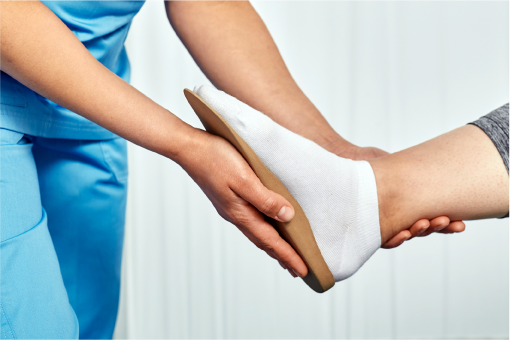
Are fallen arches—or flat feet—a real foot problem or just a label for chronically sore feet?
Fallen arches are a legitimate medical condition affecting five percent of Americans.
Flat feet can be present at birth, or develop over decades of walking, running and standing, especially on hard surfaces in the workplace.
There are several types of flatfoot conditions that occur in adults. The most common type is adult-acquired flatfoot, which is caused by
overstretching a tendon that supports the arch. Symptoms of adult flatfoot include pain, swelling, flattening of the arch and an inward rolling of the ankle.
Another common type is flexible flatfoot, in which the foot is flat when standing, but returns to a normal arch in non-weight-bearing positions.
Flat feet can be very painful and make people avoid walking, running and exercise. The condition may gradually worsen to the point that many of the tendons and ligaments in the foot and ankle are simply overworking, sometimes to the point where they tear or rupture.
If you seek medical attention early, a foot and ankle surgeon may be able to prevent it from becoming a more serious foot problem.
Treatments may include modifying or limiting activities, stretching exercises, custom shoe inserts, physical therapy and non-steroidal anti-inflammatory medications. If those techniques don’t work, a variety of surgical procedures may be considered to relieve pain and improve foot function.
Treatment of adult flatfoot can also reduce the incidence of additional foot problems such as bunions, hammertoes, arthritis and calluses, and improve a person’s overall health, according to research published in The Journal of Foot & Ankle Surgery.
For more information about foot and ankle conditions or to schedule an appointment, contact Wentz Foot & Ankle Specialists at
719-539-6600.
Dr. Ralph Wentz is a board-certified foot and ankle surgeon in Salida and a fellow of the American College of Foot and Ankle Surgeons.
